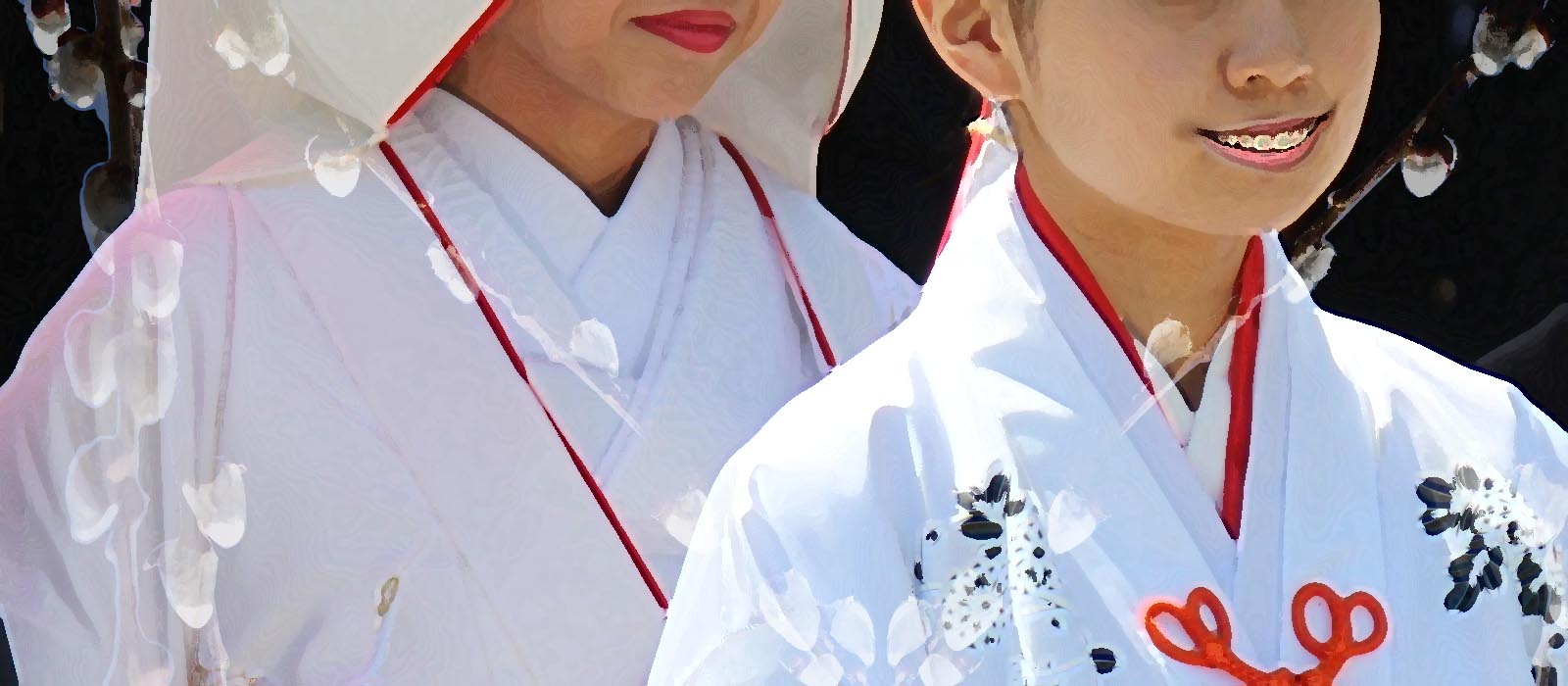The Fox Wedding
There are no white weddings on Aqualon; at least, that is, on most parts of Aqualon. The color is an ill-omen when it comes to tradition, even though people do associate it with purity in most parts of nature.
The reason for this, of course, is the hated spellblight, the affliction that each man and woman may contract throughout their lives if they do not use magic carefully.
Though the blight has been relatively rare before the spread of magic in the Middle Lands and still not a common ailment during those early centuries, the Great War led to many mages reaching too far too soon in hopes of squeezing that last ultimate flame out of the Great Clockwork and onto their enemies - enemies that sometimes carried the hallmark white hair and cobalt eyes themselves, for the secrets of Angel Saxon magus smithing involve the infusion of arms and armor with parts of ones own soul.
Ostracized in Yamato
Even though the blight is looked down on throughout the Middle Lands, the climate towards them has, for the most part, been more one of pity and sometimes disgust rather than hatred and fear. This was hardly ever the case in the Yamato Kingdom, where the founding myth of the nation rooted the hatred and fear of blighters so deeply in the popular conscience that they are referred to as demons, so-called "yasha", to this very day. And there is no end to the superstitions of the Yamato people: even white foxes are thought of as ill omens and devils that trick people into blighting, directly opposing their love for the common brown valley fox.The Yashamura
However, there are a very small number of secret yashamura 夜叉村 ("demon village"), in the Yamato Kingdom. "Yasha" is the Yamato term for people suffering from spellblight, and such people are hated, feared, and persecuted. That is why some have banded together and founded secret villages where they hide from the general Yamato populace and live in peaceful seclusion. They have even begun to develop their own, separate culture. Celebrating life above all things, this includes ostentatious wedding ceremonies, which involve the entire village. Whether blighted or not (for the children born of blighters show no sign of the affliction), all are loved and tied deeply into the community, and weddings are highlight events of the spring months of Manwhe, Wexling, and Petal, or as they are called in the Yamato Kingdom: the third, fourth, and fifth month (or sometimes moon, though the lunisolar calendar was discontinued in the Yamato Kingdom during the Age of Awakening).The Ceremony
Wedding ceremonies are only held during the spring months, when the willow trees produce fluffy white catkin, and often during the bloom of cherry blossom trees. The inhabitants of the yashamura call their wedding ceremonies kitsunekekkon 狐結婚 ("fox wedding"), because high mountain foxes are associated with yasha and bad luck and have conversely been taken on as symbols of good luck and divine protection by the yasha of the yashamura themselves. Willow catkin is collected by all the boys and girls of the village, and the women knit them together into ceremonial white catkin wigs for bride and groom to wear. White high mountain foxes are lured into the village through the offering of treats, a tradition the animals have become so used to that they arrive in droves during the spring months, having become quite domesticated and friendly with the locals. Children often play with the animals, and the villagers reason that as the white foxes mean bad luck to those fearing blight, they must mean good luck to those who welcome it. During the ceremony, a feast is held at a willow or cherry grove, depending on the bride and groom's wishes, and both perform a traditional dance around the tree, called the yashaodori 夜叉踊り("demon dance"). With every revolution around the tree, they dab a willow branch with catkin on it in paint and paint a stroke onto the tree, until it is brightly colored. The catkin wig and brushes are meant to appease the Willowking, who is believed to be the father of all yasha in Yamato superstition, and the bright colors are meant to please and appease the spirits as the newlyweds hope for their blessing. White yukata1Traditionally a bathing gown used in hot springs, the yukata has been established as a traditional clothing for summer festivals and fireworks throughout the Yamato Kingdom.
for the bride and white hakama2Many-folded, wide pants with two legs and sides that are slightly open at the top.
, shôgi3A sort of undershirt that is light and a bit longer, covering the open parts of a hakama or serving as a vest beneath a kimono.
, and haori4A traditional vest that can be worn over a shôgi or kimono. It is usually worn by men.
for the groom are the traditional garments worn during these ceremonies, and children are encouraged to throw fist-fulls of of catkin (and sometimes cherry blossoms) at and around both as they dance around the willow (or cherry) tree, while the foxes are encouraged to roam freely around the ceremonial grounds by way of scattered treats and belly rubs.
There is no cake, but pink cherry-blossom mochi filled with sweet bean paste are passed all around, and an enormous pot of stew is prepared to feed the entire village after the ceremony has taken place.






Comments